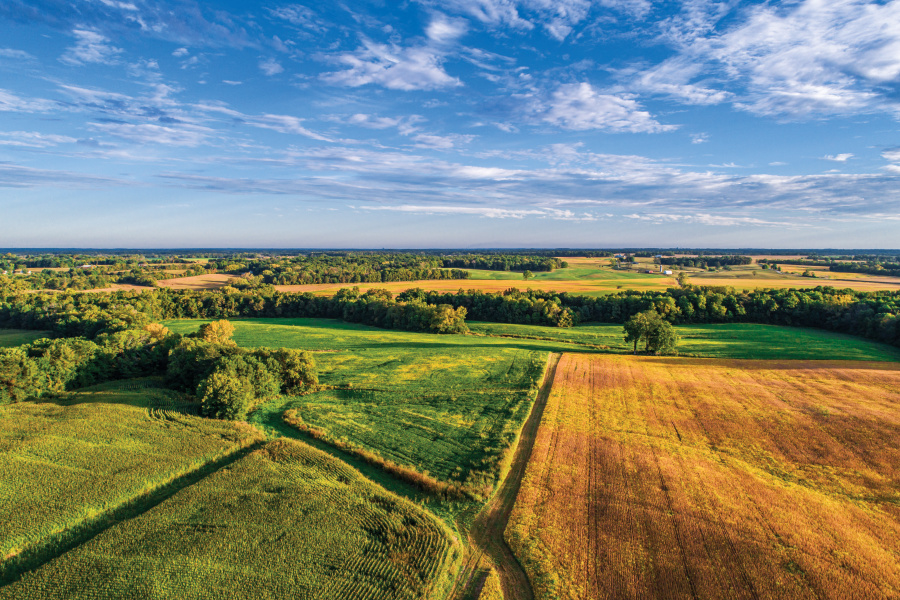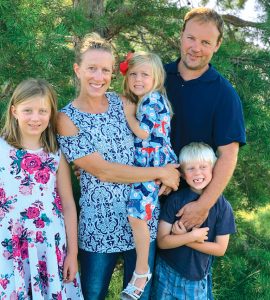Home > Ohio > Ohio’s Farmland Preservation Program Aims to Protect Family Farms
Ohio’s Farmland Preservation Program Aims to Protect Family Farms
In partnership with: Ohio Department of Agriculture

February 2020 saw the 500th farm enter the Ohio Department of Agriculture’s Farmland Preservation Program. This notable milestone demonstrates both Ohio’s dedication to conserving and protecting family farms and a desire among agricultural producers to maintain a legacy of family farms in the Buckeye State.
See more: Ohio Historic Family Farms Honor 100 Years and Counting
Farmland Preservation Program
Simply put, the Farmland Preservation Program preserves farmland by purchasing or accepting donated easements from participating landowners that require the land to be maintained in agricultural use in perpetuity.
“Together, agriculture and food constitute the top industry in Ohio,” says Sarah Huffman, executive director of the Office of Farmland Preservation. “But we continue to lose agricultural acres as they are converted for nonagricultural use. This program supports the landowners’ desire to keep their land in agricultural use by providing economic incentives to do so.”
Applicant farms must be 40 acres or more, although there have been exceptions in certain circumstances. They must also be enrolled in both the Current Agricultural Use Value (CAUV) program and an Agricultural District and maintain those enrollments. Additionally, applications must have resolutions of support from local government and conservation plans must be in place by the time of closing.
“Local government support is critical to the program’s success because it demonstrates a commitment to preserving farmland,” Huffman says. “It ensures that long-term growth plans will be compatible rather than in conflict with the needs of the agricultural community.”
The program accepted its first donated easements in 2000, and now holds 523 donated and purchased easements, totaling 82,854 acres and representing $89,286,973 funneled back into the economy.

Empowering Multigenerational Farms
Adam and Lanay Smith are young farmers responsible for growing corn, beans, and wheat on more than 1,200 acres in huron County. They rotate crops, rent ground, and are continually looking to expand and purchase more farmland of their own.
Both of them grew up on family farms. “I started working with my dad and grandpa as soon as I could walk,” Adam says. “I began planting crops in third and fourth grade and running combines in fifth grade. I always knew farming was what I wanted to do.”
Adam remembers hearing about the program almost a decade ago while meeting with one of the landowners whose ground he rents. Good news travels fast, as they say, and he and his wife soon opted to participate in the program. “The greatest appeal of the program to me was that it would prevent our farmland from being developed in the future,” Adam says. “The program provides an easement that stays with your farm forever. Even when I’m gone, my land will continue to be farmland. That’s extremely significant considering we lose countless acres of farmland to development across the nation every year.”
The easement is particularly valuable to the Smiths because their goal is to create a multigenerational farm.
“Farming is important to our whole family,” Lanay says. “We recently purchased two more farms and plan to put those into the preservation program in 2021. Our children are 5, 6, and 10 and already debate each other about who gets which farm when they grow up.”
See more: Ohio Bicentennial Farms Celebrate Family Legacies
Just the Beginning
The beauty of the preservation program is simple: There is a set amount of land available in the state (and the nation), and if it disappears, you can’t create more.
“Even though 500 seems like it’s just a number, it’s actually a milestone on the path to success,” Huffman explains. “It means that after 20 years, the program and farmland preservation continue to be relevant and desired by both landowners and local governments.”
That number also represents a challenge for the program to continue evolving to address emerging preservation and land-use issues. Moving forward, the program hopes to educate landowners and local governments who aren’t familiar with the program on how farmland preservation can serve as a vital tool in their long-term planning.



